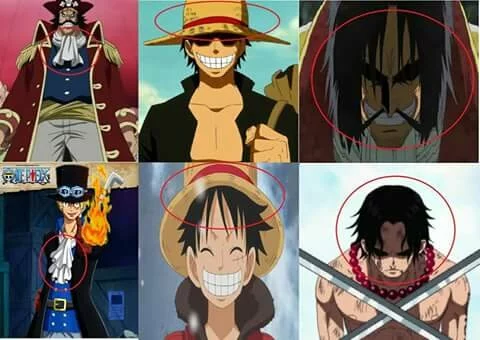…

25/03/2016 Inserisci un commento
…

25/03/2016 Inserisci un commento
Its pretty well known that Oda is referring to feudal Japan with Wano. Shogun was a military dictator in Japan during the period from 1192 to 1867. A number of Daimyos used to work under the Shogun. Daimyo were the most powerful feudal rulers during that period.
1192-1867 is long period and the rank of Shogun and Daimyo varied a lot between those period. But I have a few reasons to believe that Oda is referring to Edo/Tokugawa (1683-1868) period here.
The first clue is the closed door policy. As Brook is saying in this panel, “The Wano country is a sealed-off nation whose people do not take kindly to the outsiders”
Now lets take a look at Edo history. Tokugawa Iemitsu, the 3rd Shogun during Tokugawa regime, enacted the Sakoku edict back in 1633. The key point of the Sakoku edict was:
“The Japanese were to be kept within Japan’s own boundaries. Strict rules were set to prevent them from leaving the country, and if any such attempt was made, they would face penalty of death. Europeans that entered Japan illegally would face the death penalty as well.”
Fits perfectly with Oda’s description of Wano, right?
Secondly, Women are treated inferior to men in Wano.
Kinemon, “A woman’s place is to stand demurely in the menfolk’s shadow and speak with reserve and modesty”
Now lets look back at Edo period. Women in the Edo Period had a lower status and possessed fewer rights compared to men to a certain extent. Women also lost economical and political rights due to the Tokugawa law. Women could not own property, and a women’s husband was entitled to kill his wife for being lazy or bad, in the circumstances of household chores or how she presented herself as a faithful wife and obedient mother.
http://lifeofwomenjapan.weebly.com/edo-period.html
Thirdly, The chongmage.
The chongmage and topknot hairstyle was there even before Edo period. But its mostly associated with the Edo period and samurai.
https://en.wikipedia.org/wiki/Chonmage
So everything indicates that Oda is referring to Edo period (1603-1808) and I will speculate a few things based on history.
1. Shogun is based on Tokugawa Iemitsu:
As mentioned earlier, the controversial Sakoku edict was enacted during Iemitsu’s period. Iemitsu ruled from 1623 to 1651, and during this period he crucified Christians, expelled all Europeans from Japan and closed the borders of the country, a foreign politics policy that continued for over 200 years after its institution.
https://en.wikipedia.org/wiki/Tokugawa_Iemitsu
He had every quality to be an antagonist if you ask me 
2. Shogun and Oden are brothers?:
This one is most likely going to be proven false very soon but if the Shogun is based on Iemitsu, it has some chance to be true.
Tokugawa Tadanaga was the younger brother of Iemitsu. Because of his good heart, military and intellectual prowess, he was favored by his mother over Iemitsu as the 3rd Shogun. However, Iemitsu forced him to commit suicide just after the death of their father.
https://en.wikipedia.org/wiki/Tokugawa_Tadanaga
Oden was also forced to commit seppuku by the hands of shogun and Kaido?
3. Zoro will represent Yagyu Jubei
One of the most famous and romanticized swordsman of Japanese history was Yagyu Jubei. During Iemitsu’s reign, Jubei was probably the best samurai of the famous Yagyu clan.
There is a legend that Jubei could use only one eye, he lost his other eye during a sparring session with his father.
https://en.wikipedia.org/wiki/Yagyū_Jūbei_Mitsuyoshi
An one eyed swordsman, sounds familiar?
4. Zoro will kill the Shogun
Jubei’s father contributed significantly for the first and second shognate and therefore was granted a minor daimyo status. He was the teacher and a father like figure of the 3rd shognate Iemitsu. Jubei also served under Iemitsu.
So how does everything fit in?
In the famous film Shogun’s Samurai (1978) that was later broadcasted as a TV series called the Yagyu conspiracy (1978 – 1979), Iemitsu is killed and decapitated by the Jubei in an act of revenge.
A famous dialogue of the TV series which was later paraphrased by Kill Bill,
Sounds like a dialogue made for Zoro! 
5. Strawhat fleet of 4 ships:
Many isolated attempts to end Japan’s closed door policy were made by Western powers during 17th – 19th centuries. In 1853, Commodore Matthew Perry of the US navy threatened Japan with four warships, Mississipi, Plymouth, Saratoga and Susquehanna. He forced Japan to open to trade with the West and end the Sakoku edict finally. These ships became known as the kurofune, the Black Ships.
Luffy, like Matthew Perry, will also attack Wano with 4 ships, (1) Thousand Sunny, (2) Law’s ship, (3) Mink’s ship and (4) a samurai ship and liberate Wano from the shogun!
*Theory by Nidai_Kitetsu
25/03/2016 Inserisci un commento
25/03/2016 Inserisci un commento
Chapter 310: Connections to the Kozuki Family and Momonosuke

25/03/2016 3 Commenti
…
 ONE PIECE GOLD
ONE PIECE GOLD